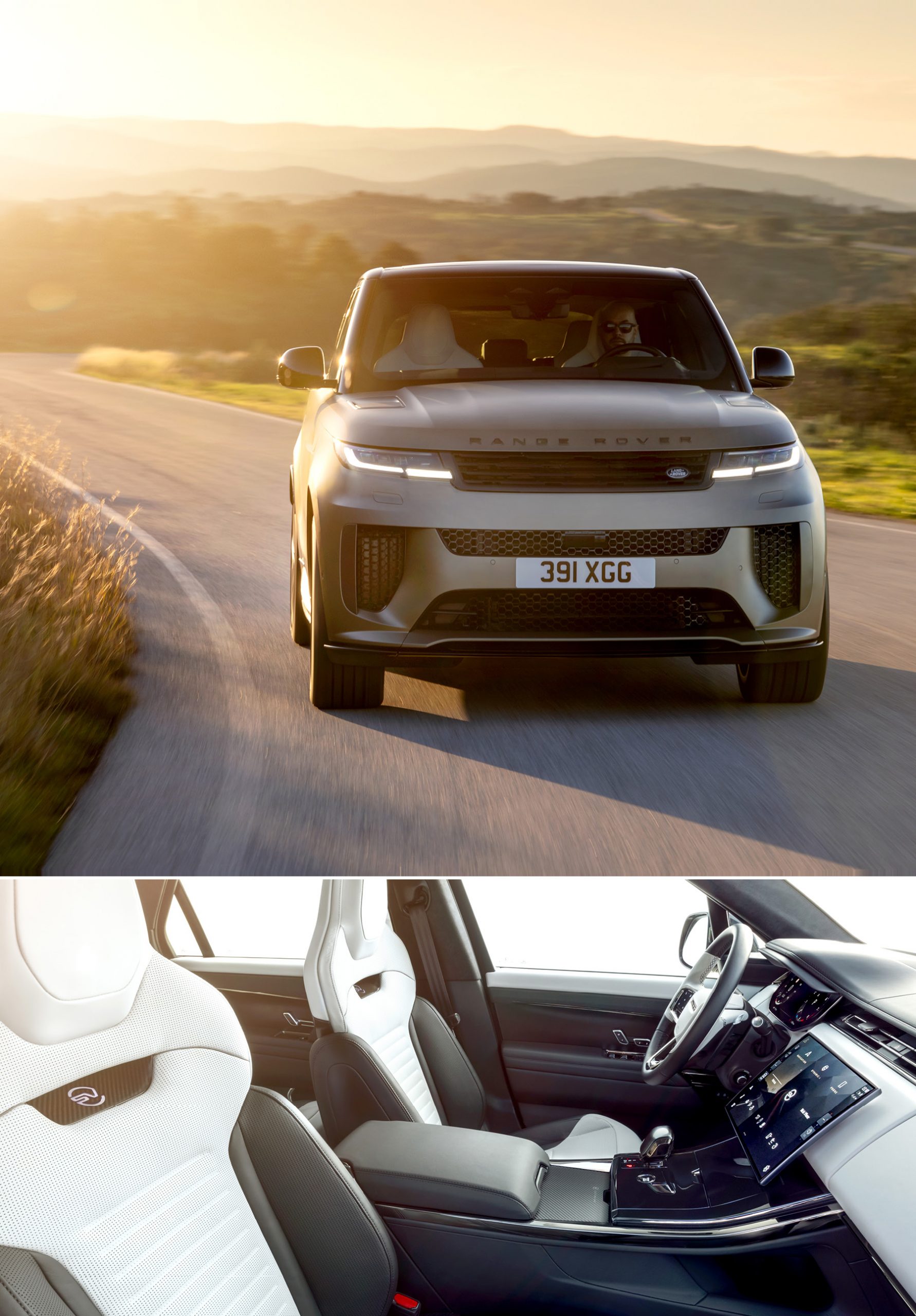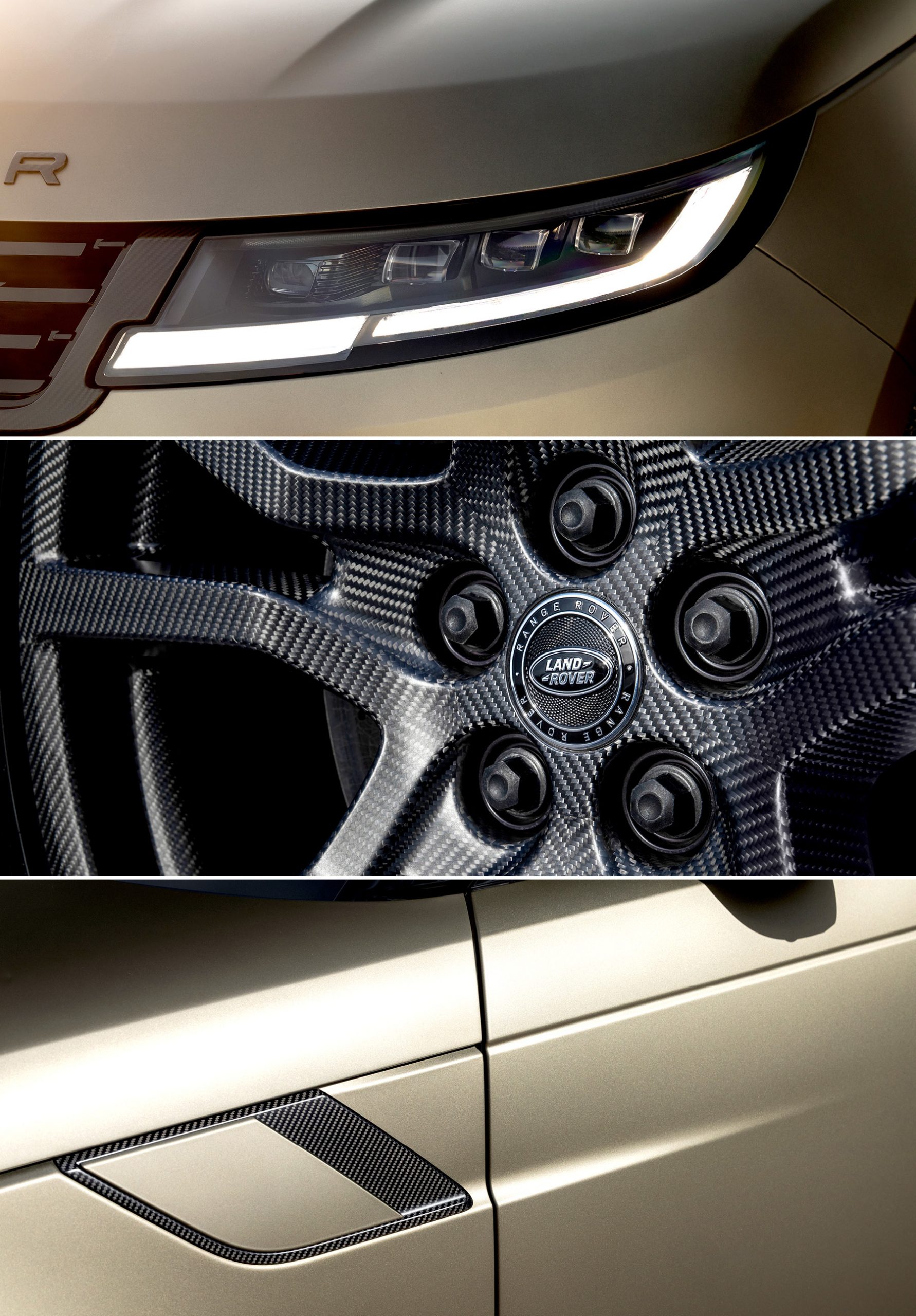Language
You can read the magazine in one of the following languages
You know that ‘ahh-man’ feeling of sinking into your favorite chair after a long day? Right, so now I want you to imagine strapping four wheels and a thumping, twin-turbocharged V8 engine to it.
What you’re picturing is the new Range Rover Sport SV, which features an accelerator that appears to have been modeled on a high-powered defibrillator, such is its impact on your heart rate every time your right foot nears it, along with some of the most high-tech seats on the planet. Together, they produce a drive experience that’s somehow both impossibly comfortable and downright crazy.

That monstrous engine, along with a state-of-the-art, Formula One-inspired suspension system and a laser focus on dynamic performance, is what gives the Sport SV its ‘Jekyll and Hyde’ personas: luxurious but ludicrous, calming but crazy.
And I do mean high-tech. The Sport SV features what the British brand calls its ‘Body and Soul Seats’, which sees each front seat fitted with four audio transducers that send tiny vibrations into the body of its occupant, like a microscopic massage function.
It can work with any piece of music, but Range Rover then commissioned Coventry University to create six unique audio tracks that form a wellness package, which can either relax or stimulate. And someone at Range Rover clearly has a twisted sense of humor, because the pre-loaded tracks have names like Calm or Serene, two words rarely applied to an office-block-sized 4WD fitted with a berserk V8 engine.
Developed in partnership with, and built by, BMW, the 4.4-liter gasoline engine is paired with a mild-hybrid system to produce a substantial 467 kilowatts of power and 750 newton meters of torque. Range Rover says that’s enough to dispatch 100 kilometers per hour in just 3.8 seconds – which is nothing short of remarkable for such a big and yacht-like SUV – and if you keep accelerating, you’ll climb all the way to 290 kilometers per hour.
That monstrous engine, along with a state-of-the-art, Formula One-inspired suspension system and a laser focus on dynamic performance, is what gives the Sport SV its ‘Jekyll and Hyde’ personas: luxurious but ludicrous, calming but crazy.
And I hate to break it to the good people of Coventry University, but no amount of high-tech transducers can keep your heart from racing when you’re really pushing this big and opulent 4WD.
Our test program included the Algarve International Circuit, which hosted the Portuguese Grand Prix in 2020 and 2021. It holds a fearsome reputation as one the most challenging race circuits in Europe, with its 4.6-kilometer layout and several tricky corners putting an onus on great handling.

No amount of high-tech transducers can keep your heart from racing when you’re really pushing this big and opulent 4WD.
In other words, not the kind of place you’d typically associate with a Range Rover, unless its driver mistook the racetrack for a winery or a polo field. But it also says a lot about the brand’s confidence in the Sport SV that it chose this venue to show its newest 4WD off to the world’s media.
Happily, it was soon apparent that Range Rover’s confidence was well-placed. The power is simply immense. Even on the racetrack’s 970-meter-long straight, the big V8 was able to hit more than 230 kilometers per hour before you needed to hit the brakes in time to avoid turning it into a very expensive pile of scrap metal.
Thankfully, the braking hardware matches the power of the engine, with Range Rover underlining just how serious it is about the Sport SV’s performance by offering race-ready carbon-ceramic brakes as an optional extra.
These are the biggest brakes available on a production car today, measuring 440 millimeters and clamped by Brembo eight-piston calipers. Which, in plain terms, are the kind of brakes you’d usually find on a supercar, not an SUV.
So sure, it’s fast in a straight line. But it’s the way the Sport SV handles the corners that’s the highlight. That’s thanks to its highly complex ‘6D’ suspension, inspired by the systems that Formula One pioneered, and then outlawed.
It’s called ‘6D’ because it’s able to control the movement of the car both up and down, left to right and from corner to corner. Without turning this into a technical dissertation, in simple terms, the Range Rover system uses a combination of hydraulic interlinked dampers, height-adjustable air springs and pitch control, which all work together to try and keep the Sport SV flat when cornering.
That’s because the extra weight and height of SUVs typically mean they will feel like they’re going to roll over when cornering at speed, so the dark wizardry of the suspension fights against those physics and keeps you feeling stable and confident.
Coupled with other technology, including rear-wheel steering and torque vectoring, the Sport SV is able to take the corners at the Algarve Circuit like a sports car. It turns sharply, sits flat and then powers out the other side with ferocity.
It actually takes some getting used to, because an SUV this big and heavy really shouldn’t be able to take corners like this. It’s like watching a rugby forward performing a delicate ballet.

An SUV this big and heavy really shouldn’t be able to take corners like this. It’s like watching a rugby forward performing a delicate ballet.
Of course, it also feels great to drive on the road, comfortable and quiet when you want it to be (especially with the Body and Soul Seats soothing you), but where the Sport SV really shows off is when it leaves both the track and the paved road behind.
For all the high-performance hardware, the Sport SV still wears a Land Rover badge on its grille, so it also has genuine off-road capabilities. It was able to navigate slippery trails, muddy ruts, cross through water and then achieve some frightening angles on a specially designed course to show off its articulation ability.
For an SUV that would hold its own against the likes of the Lamborghini Urus or Aston Martin DBX, the fact it can also get down and dirty is downright staggering. (Pro tip: Those other cars do not like hard-core off-roading).
The pick of the Sport SV is the Edition One, but the first year’s allocation of the Range Rover Sport SV has already been accounted for. Happily, this is a vehicle worth waiting for, so form an orderly line.
